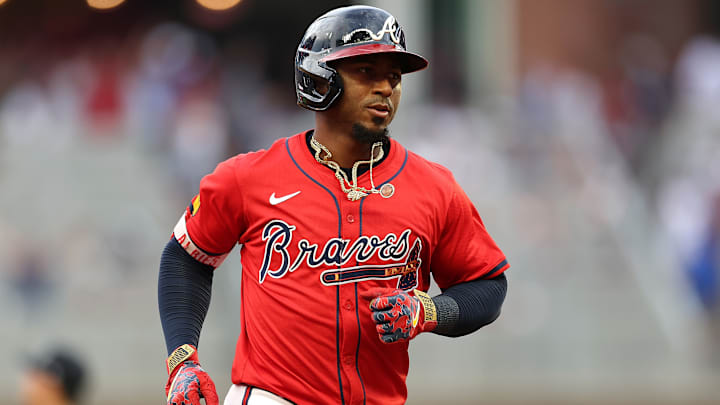
The New York Yankees spent much of the past season wrestling with instability across their infield, a problem that became increasingly difficult to ignore as the year progressed.
Defensive inconsistency, streaky offensive production, and an absence of long-term clarity at several positions contributed to a broader sense that the roster, as currently constructed, might not be well equipped for the franchise’s ambitions. As the offseason begins, the organization appears poised to evaluate substantial adjustments, both to address areas of weakness and to build a more balanced, competitive lineup for the seasons ahead.

One of the more intriguing storylines emerging from this transitional period involves the future of first base. Veteran slugger Paul Goldschmidt, long considered one of the premier first basemen in Major League Baseball, has officially entered free agency.
More: Breaking News: Red Sox Poach $8.6 Million Yankees Star
With Goldschmidt exploring opportunities on the open market and unlikely to be pursued aggressively by the Yankees, the vacancy at first base naturally shifts attention to Ben Rice, a player who spent the past season vaulting himself into relevance.
Rice delivered a true breakout campaign: he blasted 26 home runs, posted a robust .836 OPS, and demonstrated that his left-handed power could play extremely well in Yankee Stadium’s hitter-friendly dimensions.

Because of that performance, internal expectations point strongly toward Rice assuming a full-time starting role at first next season. Yet the very emergence that earned him that opportunity has simultaneously made him one of the organization’s most valuable assets in trade discussions. Jake Elman of FanSided highlighted this dynamic in a recent analysis, calling Rice not only one of the Yankees’ most attractive young players but arguably their most effective bargaining chip if they choose to pursue a major roster upgrade.
Rice is under club control through the 2030 season, which adds significant value for any team that might acquire him. A young, cost-controlled slugger with upside is one of the most desirable commodities in baseball, and Elman argues that this makes Rice a prime candidate to headline a package for an impact player.
More: Breaking News: Mets right-hander garnered trade, finalizes $11.7M blockbuster deal
Elman goes even further, suggesting that Rice may actually be easier for the Yankees to replace than another commonly-discussed trade candidate: Jazz Chisholm Jr. Chisholm, an electrifying athlete known for his versatility and star potential, would be far more difficult to replace internally, whereas first base is a position the Yankees could fill either through a smaller acquisition or by shifting players around the roster.

Rice’s bat is undeniably valuable, but Elman believes that the combination of his current performance level, his long-term club control, and the organization’s broader needs could align to make him the piece that finally unlocks a blockbuster deal.
According to Elman, the Yankees could realistically leverage Rice’s value into acquiring a proven star—someone who could stabilize the infield and add veteran presence to a roster that is still searching for the right mix of youth and experience.
Among potential trade partners, Elman identifies the Atlanta Braves as the most logical destination in a hypothetical blockbuster scenario. In his proposal, the Yankees would send Rice to Atlanta in exchange for Ozzie Albies, the Braves’ standout infielder who, despite recent struggles, remains one of the most talented and accomplished players at his position.

Elman’s reasoning rests on several key points. First, the Braves are expected to explore ways to optimize their lineup construction, particularly if they make the decision to move on from catcher Sean Murphy. If that happens, Rice could slot in as an everyday designated hitter while also serving as a backup catcher, providing valuable offensive depth and positional flexibility.
Atlanta is known for building lineups anchored by reliable power hitters with strong on-base capabilities, and Rice’s profile aligns well with that philosophy. His left-handed swing and developing plate discipline could make him an attractive long-term addition for the Braves, especially given the affordability of his contract over the next several seasons.
On the other side of the equation is Ozzie Albies, a three-time All-Star and three-time Silver Slugger who has historically been one of the Braves’ most productive and dynamic players. Albies has showcased elite bat speed, gap power, switch-hitting ability, and underrated defensive prowess throughout his career.

However, the last two seasons have been challenging for the veteran infielder. Throughout 2024, Albies battled injuries, missing more than 60 games and struggling to regain his usual consistency at the plate. The prior season offered similarly erratic production, raising questions about whether the Braves might be open to exploring trade possibilities they would previously have dismissed outright.
Still, despite the setbacks, Albies demonstrated encouraging signs late in the 2024 season. After the All-Star break, his performance improved considerably—he posted a .272 batting average, a .330 on-base percentage, and a .439 slugging percentage while clubbing nine home runs in the second half. Over his final 20 games, he logged a .787 OPS, indicating that his offensive rhythm was beginning to return. While those numbers are not quite at the level of his peak seasons, they suggest that Albies remains a high-quality hitter capable of contributing meaningfully to the middle of a competitive lineup.
Financially, Albies’ contract adds another layer of appeal for any team considering acquiring him. The Braves exercised his $7 million club option for the upcoming season, and they hold another $7 million option for the following year. In the context of modern MLB payrolls, especially for star-caliber players, those numbers are remarkably team-friendly. For the Yankees, who frequently operate near the top of the luxury-tax threshold and must consider financial flexibility when building a sustainable roster, Albies represents an affordable, relatively low-risk investment.

If the Yankees were able to acquire Albies, they would have several intriguing options defensively. Albies has spent the vast majority of his career at second base, but the Yankees could consider shifting him back to shortstop—a position he played earlier in his professional development. Doing so could open the door for other infield reshuffling, potentially allowing the Yankees to address multiple positional concerns at once. With Albies’ athleticism, quick hands, and strong instincts, a move to shortstop may not only be feasible but could revitalize his defensive value.
From a broader strategic standpoint, a trade of this magnitude would signal that the Yankees are determined to reassert themselves as legitimate championship contenders. The team has repeatedly emphasized the importance of building a roster that can compete deep into October, and acquiring an established star like Albies would represent a decisive step toward that goal.
While losing Rice would undoubtedly sting—especially given the potential he displayed during his breakout season—the Yankees must weigh the benefits of long-term stability and immediate impact against the uncertainty of relying on young players to continue producing at elite levels.

Furthermore, if the Yankees did trade Rice, they could pursue other avenues to fill the first-base role, either through free agency or by promoting additional internal talent. First base is often one of the more accessible positions to address via the open market, and with the team’s considerable financial resources, the Yankees would not be limited in their options. They might also consider restructuring the lineup so that another current player could transition into the role, depending on how the rest of the roster shapes up.
Ultimately, the idea of sending Ben Rice to Atlanta in exchange for Ozzie Albies is still speculative, but it highlights a central truth about the Yankees’ current situation: they must be creative, aggressive, and willing to take calculated risks if they hope to build a roster capable of competing with elite teams like the Braves, Dodgers, Astros, and Rangers. Standstill is not an option for a franchise with such enormous expectations and such a long drought since its last championship.
Rice’s emergence has given the Yankees increased leverage, and Albies’ changing circumstances in Atlanta have opened a window that might not have existed just a couple of years ago. Whether the Yankees ultimately pursue this path or explore entirely different trade avenues, the offseason promises to be pivotal in shaping both the near and long-term trajectory of the organization. The club’s decisions in the coming months will determine whether they enter the next season as a retooled contender or as a team still searching for answers to familiar problems.
More MLB News:
-
Breaking News: Red Sox Sign 37-Year-Old Diamondbacks’ Pitcher To $13.5 Million Deal
-
Breaking: Mariners on another blockbuster reunion after essential Josh Naylor success
-
Report: Guardians Trade For Veteran Angels Outfielder In 2-Player Blockbuster Proposal
-
Breaking: Giants kill two birds with one stone in trade with the Cardinals
-
Breaking News: White Sox officially exercised another $20 million contract



Be the first to comment